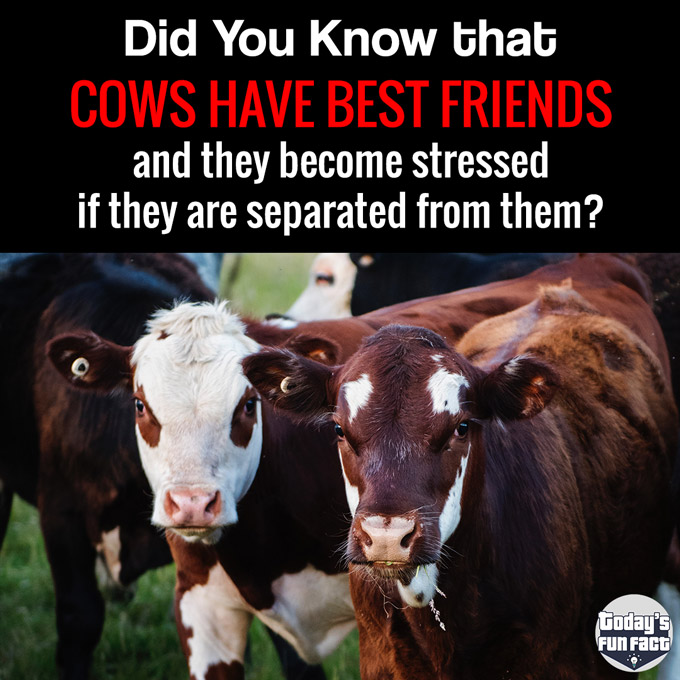
Cows Have Best Friends Graphic © todaysfunfact.com. Background photo: Pexels (PD)
Best friends forever? We all know the importance of having a close confidant(e). Best friends make life easier. They complete us and add a spark of fun into our lives.
But did you know cows (yes, the farm animals we milk and occasionally eat) also have best friends? Behind the constantly ruminating and seemingly oblivious exterior is a boiling mass of emotion.
While learning that cows recognize one another as individuals is fascinating in itself, it appears there’s a clear pattern of preferential relationships among them. A study by Krista Marie McLennan, a researcher affiliated with Northampton University, found that the animals are particularly affectionate towards specific ‘friends’.
Less Stress When the BFF is Around
The study monitored the cortisol levels and heart rate of cows when they were separated from a member of their herd. The findings showed the cows seemed less agitated and maintained lower heart rates when paired with their ‘best friend’ compared to when they were paired with individuals they had no partiality towards.
Previous research identified the presence of social bonds in a herd but never adequately explored the impact of companionship on the well-being of a cow.
How Do Cows Express Their Friendship?
• They Like to Hang Out Together: When put to pasture, ‘best friends’ tend to spend more time grazing and resting together. Findings from another study published in PLoS One suggested that cows can even recognize each other from photographs.
• Licking: Cows appear to groom each other by licking the backs, necks, and heads of preferred friends as a form of bonding.
With findings suggesting cows are highly social animals, questions arise about the conditions of factory farms. Cows hardly get the chance to build long friendships, with large-scale dairy farms regrouping a herd several times a year— hence severing friendships formed within the group and breaking the social hierarchy.
McLennan states: “The regrouping of cattle is often associated with an increase in aggression as individuals try to establish their place within the group’s hierarchy. Animals have to compete for access to vital resources, such as food and a space, to rest, in groups often dominated by individuals higher in rank. The stress associated with these changes in grouping can have significant health and welfare implications for dairy cows …”
